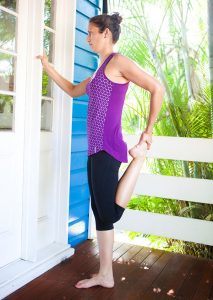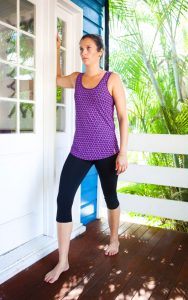To stretch or not to stretch
Throughout most of my life (age 5 onwards) I have played very competitive soccer. During the later stages of my sporting (late teens and early twenties), I was plagued by a recurring injury to my left quad. This happened a few times over a couple years, always being a low-mid grade tear, but often kept me watching from the sidelines for months at a time. Reflecting back on my pre-game warm ups and routines, I can’t help but think about the type of stretching I would do before games.
The two most practised and basic types of stretching are:
- Static stretching
- The more traditional type of stretching, involving getting in that “stretched position”, and holding it there for multiple seconds. An example is a quadriceps stretch in the photo above, holding this position for 30 seconds or more.
- Dynamic stretching
- Constant movement involving bringing the body in and out of a stretched position repeatedly. An example is jogging while doing “high knees” or doing lunge walks.
So, when do we use static stretching? When do we use dynamic stretching? When do we actually do any of them, before or after sport?
There are a lot of variables which can have big impacts on not only your chance of injury, but also your performance during your sport or exercise.
Generally… research is now showing that static stretching should be used after exercise or sport and dynamic stretching should be used before exercise or sport. It is suggested that following these guidelines will improve performance and decrease injury susceptibility.
So… how does this work?
Static stretching for long periods of time, can acutely lengthen the muscle to a degree not necessarily required for sport. This lengthening process may actually make the athlete more susceptible to injury in the short term (ie during the sporting performance immediately after stretching). Static stretching, because of its nature can relax people to a level which is not ideal for athletic performance. It has it’s benefits after exercise as well as helping to increase flexibility.
Dynamic stretching can loosen up the muscles in a stable environment (where nothing unexpected will happen – ie a tackle or quick change of direction), similar to what the muscles will be experiencing during sport. It also can help maintain an elevated overall body temperature, optimal for sport performance. It is proposed that this combination of keeping the body “awake” so to speak, and not “over-stretching” the muscle, is the ideal combination to prepare somebody for sport.
Most muscle groups can be stretched in a static or dynamic way, if you have any questions or recommendations for how to stretch any muscles/muscle groups, please ask!
Happy stretching!








